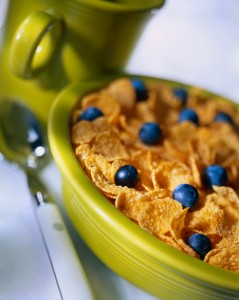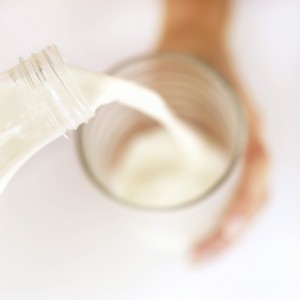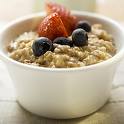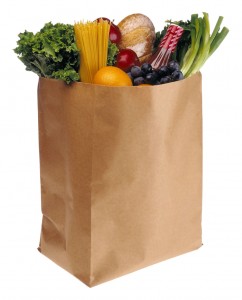Ask Shelley Case: Anemia & Celiac Disease – Causes & Treatment
Tuesday, August 10th, 2010Question: After years of being anemic, I just found out I have celiac disease. Do you have any advice on maximizing iron absorption?
Anemia is a concern for many folks that have been diagnosed with celiac disease. Anemia is a condition that results from a deficiency in the size or number of red blood cells or the amount of hemoglobin in these cells. There are many causes of anemia, however, the most common is due to iron, folate or vitamin B12 deficiency. In celiac disease damage to the intestinal villi in the area where iron and folate are absorbed frequently results in a deficiency of these nutrients. As the disease progresses, villous atrophy in the lower part of the small intestine (terminal ileum), resulting in vitamin B12 malabsorption, can also occur in some individuals. Other reasons for inadequate absorption of B12 may be due to small intestinal bacterial overgrowth, low stomach acid levels (caused by the long-term use of gastric acid blocking agents for the treatment of reflux or ulcers) or pernicious anemia (an autoimmune disease that produces antibodies that destroy specific cells in the stomach which contain the Intrinsic Factor (IF) that is necessary for the absorption of B12 from foods).
results from a deficiency in the size or number of red blood cells or the amount of hemoglobin in these cells. There are many causes of anemia, however, the most common is due to iron, folate or vitamin B12 deficiency. In celiac disease damage to the intestinal villi in the area where iron and folate are absorbed frequently results in a deficiency of these nutrients. As the disease progresses, villous atrophy in the lower part of the small intestine (terminal ileum), resulting in vitamin B12 malabsorption, can also occur in some individuals. Other reasons for inadequate absorption of B12 may be due to small intestinal bacterial overgrowth, low stomach acid levels (caused by the long-term use of gastric acid blocking agents for the treatment of reflux or ulcers) or pernicious anemia (an autoimmune disease that produces antibodies that destroy specific cells in the stomach which contain the Intrinsic Factor (IF) that is necessary for the absorption of B12 from foods).
How Can You Treat Anemia?
Once a diagnosis of celiac disease is confirmed and the gluten-free diet is initiated, the villi begin to heal which allows for the absorption of nutrients. Response to the gluten-free diet varies from one individual to another and may take on average from 2-18 months until the nutritional deficiencies are corrected and symptoms resolve. In addition to a strict gluten-free diet, it is important to include foods high in iron, folate and vitamin B12. Nutrition supplements may be required if the deficiency is severe. In the case of pernicious anemia, life-long vitamin B12 supplementation (shots, intranasal or oral supplements) are necessary. Discuss with your physician and dietitian about supplementation.
There are two types of iron in foods, heme iron and non-heme iron:
Heme Iron:
• Is more readily absorbed by the body (approximately 23% of heme iron consumed is absorbed).
• Absorption is not changed by other foods in the diet.
• Is found only in red meat, fish and poultry.
Non-Heme Iron:
• Is not absorbed as well as heme iron (only 3-8% of non-heme iron consumed is absorbed).
• Absorption can be increased or decreased by other foods in the diet.
• Is found in fruits, vegetables, grains and eggs.
How Can You Maximize Iron Absorption?
1. Choose foods with a higher iron content
2. Eat a source of heme iron with non-heme iron at the same meal: An example is stir-fried beef, chicken, pork or fish with vegetables (e.g., broccoli) and rice and toasted almonds or sesame seeds; or Chili with meat and beans.
3. Vitamin C increases absorption of non-heme iron so combine vitamin C-rich foods with non-heme iron foods at the same meal: An example of this includes Poached egg and glass of orange juice; Casserole with rice, beans, canned tomatoes or tomato sauce; or a Spinach salad with strawberries or orange segments.
4. Avoid coffee or tea with meals rich in iron as these beverages contain tannins which interfere with iron absorption. It is better to drink these beverages between meals.
5. If taking iron supplements, consume supplement with vitamin C-rich foods.
How Much Iron Do You Need?
For more than 50 years, nutrition experts have produced a set of nutrient and energy standards known as the Recommended Dietary Allowances (RDA’s). A new set of standards has been developed called the Dietary Reference Intakes (DRl’s) which reflect collaborative efforts of American and Canadian scientists, through a review process overseen by the National Academy of Science’s Food and Nutrition Board, Institute of Medicine, National Academies.
The newly established levels for vitamins, minerals, protein, fats, cholesterol, carbohydrate, fiber, and energy levels can be found at this Board’s website (please note that iron levels are listed on page 2).
Ask Shelley Case is a feature of BeFreeForMe.com. It is published the second Tuesday of each month. Shelley Case is a Registered Dietitian, Consulting Dietitian, Speaker and Author of Gluten-Free Diet: A Comprehensive Resource Guide. Visit Shelley and get more gluten-free tips & info at: www.glutenfreediet.ca
 any alcoholic beverages that are gluten-free?
any alcoholic beverages that are gluten-free? the gluten-free diet? I would love to pass this info along to family members & friends who want to learn more about my daughter’s diagnosis.
the gluten-free diet? I would love to pass this info along to family members & friends who want to learn more about my daughter’s diagnosis. urate diagnosis.
urate diagnosis. Q: I’m usually running late in the morning so I often skip breakfast. Can you give me some healthy and quick breakfast tips?
Q: I’m usually running late in the morning so I often skip breakfast. Can you give me some healthy and quick breakfast tips? diagnosed with celiac disease. In addition to avoiding gluten do I need to avoid dairy products too? I hear that celiac disease and lactose intolerance can sometimes go hand-in-hand.
diagnosed with celiac disease. In addition to avoiding gluten do I need to avoid dairy products too? I hear that celiac disease and lactose intolerance can sometimes go hand-in-hand. Question: Are oats allowed on a gluten-free diet?
Question: Are oats allowed on a gluten-free diet?  may contain gluten! Help!
may contain gluten! Help!

